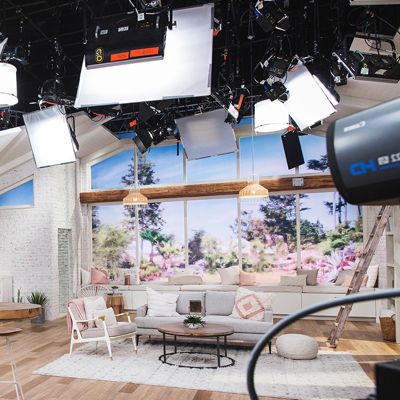
In the early 1980s, a week before Christmas, a woman walked into a supermarket-size store in Tysons Corner, Va., and became so dumbfounded that she started talking to herself.
“Where’s the robot?” she said. “And the hairy monster?”
A Washington Post story that recounted her muttering did not say she was delusional. She was simply overwhelmed by a store that had become, in The Washington Post’s words, “like McDonald’s…an American institution.”
Toys R Us.
“What we are is a supermarket for toys,” founder Charles Lazarus told The Post. “We don’t have a competitor in variety. There is none.”
Of course, many would eventually come along — Target, Costco, Walmart, Amazon — and force the company to announce Wednesday that it is closing all of its stores. But back in the 1980s, and for several decades before, Lazarus was right. Nobody could compete.
The “Toy King,” headlines called him.
Lazarus never aspired to the throne. After serving in World War II as a cryptologist, Lazarus returned home to the nation’s capital hoping to start a family. Like his father, the proprietor of a bicycle shop, he wanted to start a small business. Baby furniture seemed like a good idea: GIs wanted to settle down and economic wealth was rising.
[ Lego’s plastic bricks transformed childhood. Are they sturdy enough to survive screens? ]
In 1948, at the age of 25, Lazarus opened Children’s Bargain Town below his father’s bike shop on 18th Street in Northwest Washington. Business was brisk. Parents soon began asking Lazarus where they could buy toys, so he stocked them. When a parent came back to buy another toy after the first one broke, Lazarus had an epiphany: He might only sell one crib to a family, but toys would keep them coming back.
Late in life, Lazarus was asked in a documentary for his grandchildren whether he had anticipated the baby boom.
“I was fortunate to join it,” he said. “I had no idea to what size the toy business could be.”
Big. Very, very big.
Lazarus got out of the baby furniture business and exclusively into toys, renaming his store — soon to be stores — several times before settling on Toys R Us, with the R spelled backward as a gimmick. Supermarkets were his model. Long aisles. Products stacked high. Variety. Big enough to get products at discounts to pass on to shoppers.
The Toy King could play rough, too.
“Lazarus offered toy manufacturers the tantalizing picture of year-round toy sales and the ability to produce 12 months a year,” Eric Clark wrote in “The Real Toy Story: Inside the Ruthless Battle for America’s Youngest Consumers.” “But for that, he could extract a price and he did.” Instead of paying for products right away, Lazarus forced toy makers to take payment months later. He demanded exclusives and early releases. He made them advertise — for Toys R Us.
And with his technology background, Lazarus set up a computerized inventory system so from his desk he could see every product sold and what needed to be restocked. “I think Toys ‘R’ Us is a unique operation — the only proprietary merchandise company that rivals IBM as revolutionary in concept,” a retail analyst told The Post in 1982. “Their superb controls and information systems are unrivaled in the industry.”
[ From the A&P to Amazon: The rise of the modern grocery store ]
Lazarus embraced change, especially video games, which brought adults who didn’t have kids into the store. “There is an increasingly fine line,” he said, “between where adult begins and child ends.” The Post wrote:
The electronic-games business, in his view, is not just a passing fancy, a position that makes Lazarus a popular figure at places like Warner Communications Inc., parent company for Atari, the field’s leader. “We strongly believe that electronic games are not a fad; it is the way America is playing games now and will increasingly do so in the future,” he told a retail seminar in New York City recently.
The retail profit in the electronic games bonanza is not in the hardware, which Lazarus, like most other retailers, sells for almost no markup. What drives the retail end of that business is the software, the games and programs that plug into the home system. Even if the traditional board-game area continues to collapse, the sales and mark-up for the computer software is so strong that Lazarus says the changing product mix isn’t harming his operations at all.
But in the 1990s, as other chains got into the toy and video-game business, Lazarus lost his iron grip on toys. He retired in 1994 and watched as the company tried to regroup, refocus, realign — the inevitable buzzwords of decline — and was eventually sold off to the (also) inevitable private equity firms who load companies with debt while trying to turn them around.
“Together with our investors, our objective is to work with our debtholders and other creditors to restructure the $5 billion of long-term debt on our balance sheet,” the company said in its bankruptcy filing, which is language a long distance from the company’s humble roots and its endless aisles of robots and hairy monsters.
From that story with the woman who couldn’t find robots just before Christmas:
In the Saturday crush at the Tysons Corner store, housewives in fur-lined parkas swarm around the “check approval” desk. Grandfathers look thoughtfully at a row of Tonka trucks. A toddler wrapped in a blue snowsuit with a pointed hood grabs a music box off the shelf, only to give it back to Mommy after a tug-of-war. One customer is a lawyer dressed in blue blazer and tassle loafers. Another is a truck driver in bib overalls.
A woman couldn’t put her hands on Strawberry Shortcake.
“I guess we don’t have any right now,” a clerk told her.
“Do you know when you might?” the woman asked.
“Well, we get trucks in almost every day,” the clerk offered. “It could be tomorrow.”






















